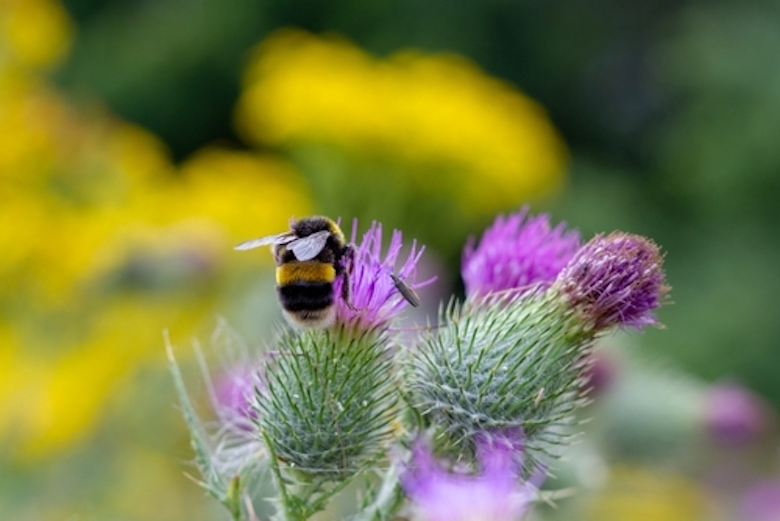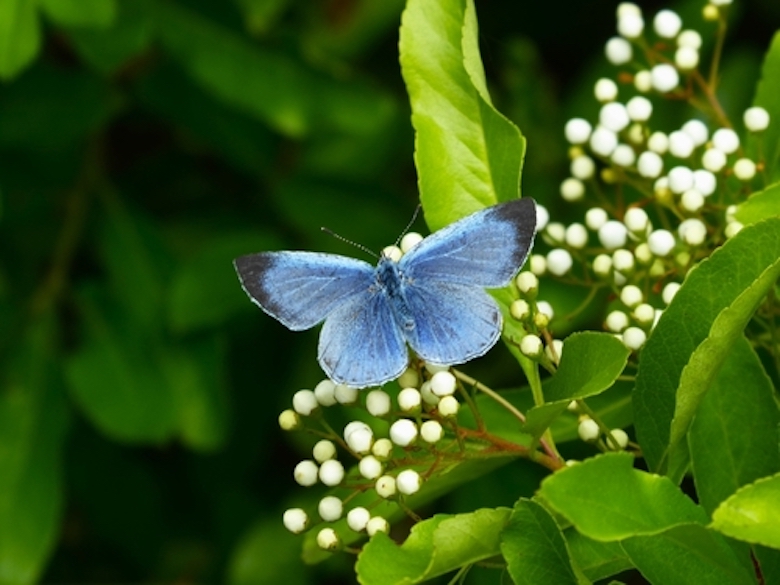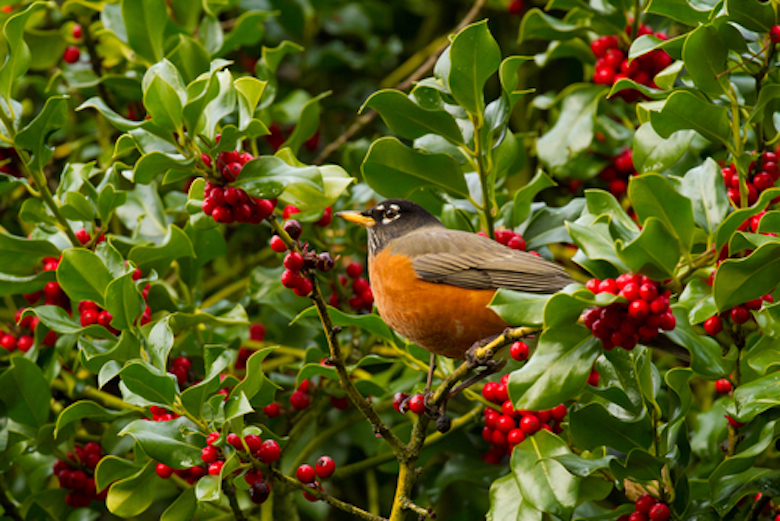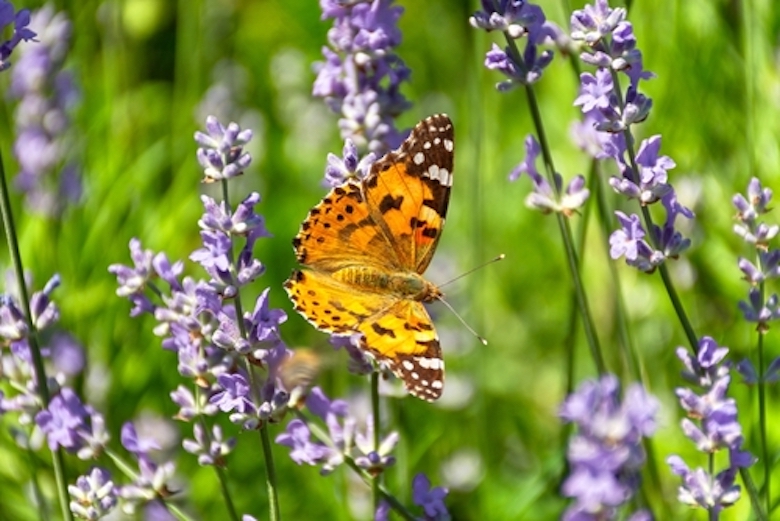Wildlife does more than just make our gardens beautiful; it plays a vital role in creating a healthy, balanced ecosystem. From bees pollinating our fruit and veg to birds and hedgehogs acting as pest control, encouraging wildlife is one of the best things you can do.
Many cultivated plants provide essential food and shelter, and this goes beyond planting seeds for pollinators. Here’s how you can turn your garden into a welcoming home for helpful birds, bees and beasties.
Why is wildlife helpful in the garden?

Image: Shutterstock
Bees and butterflies are crucial pollinators, ensuring we get a good harvest from our fruit trees and vegetable patches. Birds are fantastic at keeping pest populations in check, helping to keep the number of slugs and aphids down.
Meanwhile, nocturnal visitors like hedgehogs, frogs, and toads will happily dine on insect pests, and beneficial insects like ladybirds and lacewings are voracious aphid-eaters. By supporting them, you support your garden’s health and contribute to wider local biodiversity.
Top tips for creating a wildlife-friendly garden

Source: Shutterstock
Creating a welcoming space isn’t complicated. By following a few simple principles, you can make a huge difference.
- Provide Food All Year Round: Wildlife needs energy through all the seasons. Aim for a sequence of flowering plants and berry-producing shrubs to provide a continuous food source.
- Choose Simple Flowers: Choose single, open-faced flowers where bees and butterflies can easily reach the pollen and nectar. Many highly-bred, double-flowered plants are difficult for insects to access.
- Offer Shelter and a Home: Trees, shrubs, and hedges are perfect for nesting, hiding from predators, and sheltering from rain. A simple pile of logs or branches in a shady corner provides an ideal habitat for frogs, toads, and beneficial insects. Even a small patch of grass left to grow long can create a home for the caterpillars of butterflies like the meadow brown and skipper.
- Add a Water Source: A pond, no matter how small, is a fantastic feature for attracting wildlife. It will bring in frogs, toads, newts, and dragonflies, and provides a drinking spot for birds and small mammals.
- Plant in Sunny, Sheltered Spots: Position nectar-rich flowers in the sunniest, most sheltered parts of your garden. Butterflies in particular love to feed and bask in the sun.
- Go Chemical-Free: Avoid pesticides wherever possible, as they harm beneficial insects as well as pests. Give natural predators time to do their job before reaching for slug pellets or a spray.
What to grow for bees and butterflies each season

Image Source: Shutterstock
Butterflies and bees get their energy from nectar, and by planting the right flowers you can provide food from the first signs of spring to the last days of autumn.
- Spring: As butterflies emerge from hibernation, they need to build up reserves. Early-flowering plants are a lifeline.
- Top Spring Plants: Crocus, Aubrieta, Sweet Rocket (Hesperis matronalis), wallflowers, and flowering currant (Ribes sanguineum). Even flowering herbs like Thyme, Marjoram, and Chives are excellent.
- Summer: This is when the garden should be buzzing with activity. A huge range of plants will sustain pollinators while looking beautiful in your borders and pots.
- Top Summer Plants: The classic Butterfly Bush (Buddleja) is an undeniable magnet. Lavender is another favourite. For perennial power, Scabiosa ‘Butterfly Blue’ and Sea Thrift (Armeria maritima) are perfect for containers or even growing in gravel paths. Try biennials like Sweet Williams, and easy-to-grow annuals like Californian Poppies (Eschscholzia) and Tithonia rotundifolia ‘Torch’.
- Autumn: Pollinators need to build up energy stocks for migration or hibernation. Daisies are the star of the autumn garden for this.
- Top Autumn Plants: Rudbeckia, Helenium, Michaelmas Daisies (Aster), Sedum spectabile (Ice Plant), and late-flowering Ivy are all fantastic choices.
Remember the Caterpillars! You can’t have butterflies without caterpillars. Thankfully, most are specialist feeders with specific host plants, meaning they won’t decimate your entire garden. The Holly Blue butterfly, for example, lays its eggs on holly and ivy, but the caterpillars only feed on the flowers and berries – a small price to pay for a brood of beautiful blue butterflies!
What to grow for birds and other helpers

Image: Shutterstock
Birds are brilliant at pest control, as well as bringing life and song to the garden. Provide them with food and shelter, and they’ll reward you many times over. Here’s what to consider:
- Plants with berries and seeds: Birds love the berries of plants like Pyracantha, holly, hawthorn, and rowan (Sorbus aucuparia). In late summer, let flowers like sunflowers, Echinacea, and teasels go to seed for a natural bird feeder.
- Plants for shelter: Evergreen hedges and shrubs provide excellent cover from predators and the elements during the cold winter months.
A quick list of wildlife-friendly plants
Here’s a selection of excellent plants to attract a wide range of wildlife to your garden:
| Wildlife Group | Primary Need | Plant Suggestions & Habitat Ideas |
| Pollinators | Food (spring nectar) | crocus, wallflower, aubrieta, flowering currant |
| Food (summer nectar) | lavender, scabious, allium, buddleja, marigold | |
| Food (autumn nectar) | sedum (ice plant), aster, rudbeckia, verbena bonariensis | |
| Habitat | Provide a shallow ‘insect bath’ with pebbles and stones for insects to easily drink from | |
| Birds | Food (berries & seeds) | sunflower, teasel, echinacea (seedheads), rowan, hawthorn |
| Habitat | ivy, holly, hawthorn and pyracantha provide shelter, safe nesting sites and food for birds | |
| Other Wildlife (Insects, Mammals, Amphibians) | Food (natural prey) | Leave fallen leaves and flower stems to create a habitat for slugs, beetles, and insects (food for hedgehogs, frogs, and birds). |
| Habitat | A log pile, an area of long grass, dense ground cover (e.g., hardy geraniums), or ferns in damp spots. |
As well as planning your planting with wildlife in mind, you can also provide hedgehog homes, bird feeders and other garden wildlife accessories. By making a few thoughtful choices, you can create a stunning garden that not only looks good but also does good, providing a sanctuary for the wonderful wildlife on our doorsteps.
Lead image: Shutterstock

